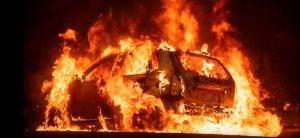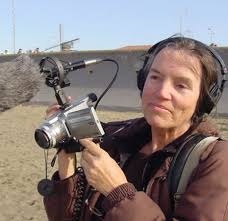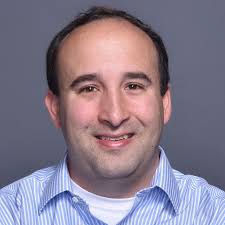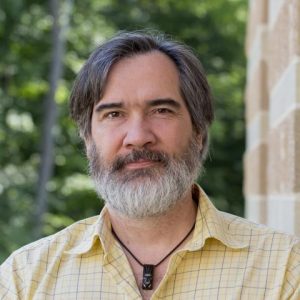Literally choking on smoke, radio host Maria Gilardin reports from fire-struck Northern California. Washington Post meteorologist Jason Samenow on climate & fire. Libbe HaLevy tips Woolsey fire at nuclear lab site 30 miles from LA. Wildfire experts Mark Cochrane, John Betts, & firefighter Lou Paulson. Radio Ecoshock 181121
Listen to or download this Radio Ecoshock show in CD Quality (57 MB) or Lo-Fi (14 MB)
**********************************************************************************************************
PLEASE DO NOT FORGET TO HELP SUPPORT RADIO ECOSHOCK
Radio Ecoshock is a public service, getting out the news and science of climate change and other environmental threats. I pour my life into this show, hoping it will help. The Radio Ecoshock bank account is getting low. I need your help to keep going. The wonderful folks who donate $10 a month are paying the phone and internet bills. But I have other costs, so please “subscribe” with a monthly donation, or send what you can. It’s easy on this page. We have a great opportunity here to discover new science and get it out to the whole world free of charge by syndicated radio, podcast, and the internet. I hope you will help if you can.
– Alex
***************************************************************************************************************
CLIMATE TRAGEDY STRIKE CALIFORNIA
The savage wildfires in California became a national tragedy, and a global worry. It’s still early days, but we have the potential for hundreds dead in these strange November mega-fires. They struck after a long-standing drought, pumped up by climate change, withered vegetation and killed 129 million trees in the State.
This fire reporting is stirring up my own unresolved angst about fires near my home in British Columbia Canada over the past three summers. Like when I went out on the porch and saw a fire coming unannounced over the crest of the hill right opposite us. That makes a man feel nervous.
I almost wept on hearing the situation in California. There could be hundreds dead. Tens of thousands of people are temporarily homeless, and it sounds likely maybe 5,000 of them will remain homeless. Any facilities in nearby Oroville and Chico California have overflowed. Those who made it out by car are living in their cars, whole families. They are the lucky ones. Others are in tents or under tarpaulins.
As the Sacramento Bee reports:
“Big picture, we have 6,000, possibly 7,000 households who have been displaced and who realistically don’t stand a chance of finding housing again in Butte County,” county housing official Mayer said. “I don’t even know if these households can be absorbed in California.”
Maria Gilardin tells us the city of Paradise, population around 27,000, was mostly poor people. Few bought or could afford fire insurance. Even if they had it, the insurance would not be enough to rebuild. That is because these city fires erupt with so many toxic chemicals from our burning homes and cars. When fire torched homes in Redwood Valley last year, people returning were required to clean up the soil around the homes, some going two feet deep over the whole lot. Once it burns, a neighborhood begins to sound like a super-fund site. That is the toxic way we live now.
Lurking behind all these fires, unseasonably late, driven by hot Santa Anna winds, moving faster than cars, is the big one: climate change. I don’t need to phone up more scientists to get the facts. Back in 2013 I posted my first show. It was called “The Age of Superfires”. Two years later I collected 3 key fire science interviews for a new program. Since then I’ve interviewed at least a dozen fire experts and climate scientists. It all adds up, and for Western North America, and apparently now for Scandinavia, Russia and Australia, super-fires are the new normal.

Perhaps mega-fires seem distant to you. Maybe you’ve been flooded out or loaded with snow instead. But we know the smoke will travel thousands of miles, a new wave of carbon has been released from the trees to the sky, and the world’s fifth largest economy has been rocked by a fearful new reality. Earth has become an unstable and more risky place to live. That’s where we have come, in our gas cars, our oil machines, our coal power. Climate change has arrived. It has many frightening faces, and one is fire.
From Mendocino County, don’t miss my talk with Maria Gilardin, recorded November 14th, 2018. In the interview, Maria gives us a snapshot of what those great forests of Northern California looked like when the first Spanish explorers came. She talks about how the original native people had their own way of forest management and fire control. Now Maria has just released her recordings from 1996, as she documents the Native American approach to forests in that area.

Radio Producer Maria Gilardin
Just posted! Here is Maria Gilardin’s description of this timely mini-documentary.
“‘Fire and the Underground Life in the Forest’ with Peter Wohlleben and Suzanne Simard
As California tries to come to terms with the largest and deadliest fires of 2018, attention falls on forests. Logging companies want more clear-cuts. Donald Trump says the forest floor should be cleaned with rakes.
Indigenous elders and visionary foresters say that nobody is asking the trees what they want and need. Especially now as the heat is rising, water becomes scarce and winds are fiercer.
Peter Wohlleben is the author of: “The Hidden Life of Trees: What they Feel, How they Communicate: Discoveries from a Secret World”. He is a German forester who became disenchanted by the technologies he was expected to employ. He now manages a 4000 year old beech tree forest in Germany. He was interviewed by Steve Paikin on The Agenda in October, 2016.
Wohlleben referred to research by colleagues and scientists that he benefited from. Important among them is Suzanne Simard, professor of forest ecology at the University of British Columbia. She has tested theories about how trees communicate with other trees.
Simard also helped identify something called a hub tree, or “mother tree”. Mother trees are the largest trees in forests that act as central hubs for vast below-ground mycorrhizal networks.”
Get that new TUC Radio program here.
You can find all of Maria’s programs on TUC radio right here on her web page. Sign up for her podcast, or order from her extensive back catalog (going back to the 1990’s).
Listen to or download this 25 minute Radio Ecoshock interview with Maria Gilardin in CD Quality or Lo-Fi
JASON SAMENOW FROM THE WASHINGTON POST
After his career at the EPA, meteorologist Jason Samenow leads the Capital Weather Gang at the Washington Post. He is one of the most influential climate-aware weather journalists in the United States. We steal a few minutes from one of America’s busiest weather desks, to talk about how climate influenced the California fires. I appreciate Jason sharing his time with us.

Jason Samenow, Washington Post Weather Editor
Listen to or download this 10 minute Radio Ecoshock interview with Jason Samenow in CD Quality (only)
I was inspired to call Jason following this great article in the Post: “The weather and climate behind the California infernos that wrecked Paradise and torched Malibu“.
————————
LIBBE HALEVY COVERS THE NUCLEAR RISK BEHIND A CALIFORNIA FIRE
Another long-time radio host works tirelessly to get the truth out. She’s Libbe Halevy, and she’s got the best regular program on nuclear danger in America. I don’t say that lightly. It’s the best. I check it out every week. The show is called “Nuclear Hotseat“. You can get Libbe’s show from her web site, or listen on some Pacifica radio stations. Libbe is a survivor of radiation from the Three Mile Island nuclear accident in Pennsylvania. Check out her book about that here.
This week Libbe was quick to produce this NUCLEAR FIRE SPECIAL: “CA’s deadly Woolsey fire started at Santa Susan Field Labs, site of the infamous 1959 nuclear meltdown; has radioactive contamination from site been dispersed in smoke, ash? Interviews w/Physicians for Social Responsibility’s Denise Duffield, Arnie Gundersen of Fairewinds.org, San Onofre Safety’s Donna Gilmore, & local Mom/activist Melissa Bumstead on this week’s Nuclear Hotseat with host Libbe HaLevy”. In that show, Arnie Gundersen tells listeners how to collect dust samples from their vacuum cleaners to help with citizen monitoring after the fire!
You probably did not know America’s biggest reactor accident happened near LA in 1959. It was kept secret for 20 years, and only discovered by a team of students investigating. It turned up in archived notes from a former employee at the site, deposited at UCLA. You can find out more in this YouTube video “L.A.’s Secret Meltdown; Simi Valley, CA(1959)Largest Nuclear Incident in U.S. history.”
Physicians for Social Responsibility refute media claims that wildfire ash poses no radiation health problem. (When the announcement was made, there was no monitoring and no real assessment.
Libbe Halevy continues:
“Southern California’s deadly Woolsey fire started at the exact site of a 1959 nuclear meltdown. How deadly and radioactive is the resulting smoke, and who can we trust to tell us the truth? Four experts who don’t agree with the “official line” provided by the government and nuclear industry offer insights and personal experiences of the Santa Susana Field Lab, as well as a way to test for radiation in their homes on this week’s Nuclear Hotseat“.
Libbe points us to another key group: Committee to Bridge the Gap. Read their story “Massive Woolsey Fire Began On Contaminated Santa Susana Field Laboratory” as posted November 12, 2018.
———————–
THE ECONOMIC HIT OF THE CALIFORNIA FIRES
Let’s think for a minute about what this fire means to the overall economy. As you heard from Maria, there is plenty of talk about equipment from California power companies starting these latest fires, the most deadly in the State’s history. There are signs that the Camp fire in Northern California, where the town of Paradise burned, began at a utility power line. CNN reports: ” PG&E disclosed in a regulatory filing earlier this week that it ‘experienced an outage’ on a transmission line just 15 minutes before the Camp Fire broke out.”
The New York Times reported “California Utility Customers May Be on Hook for Billions in Wildfire Damage”. In Northern California, Pacific Gas and Electric Company, PG&E, could go bankrupt. The lawsuits for damages could be billions of dollars more than the company’s insurance.
We learn from Libbe HaLevy that at 2:22 pm on Thursday, just two minutes before the Woolsey fire was spotted at the Santa Susana nuclear site, the Chatsworth substation, owned by Southern California Edison, had a power outage incident. California Edison and PG&E were already saved once by legislation signed by Governor Jerry Brown this September. That law let the utilities pass fire damaged on to customers, and it was passed to prop up the state electric grid after more than 10 billion dollars in damages from the previous record fires in 2017.
The new law does not cover 2018 damages, which are expected to go way over the previous $10 billion. Just imagine all those multi-million dollar mansions that burned in the canyons. The schools and hospitals burned out. Roads melted. Hundreds of thousands of people evacuated. A whole town burned over, possibly with hundreds dead. These fires of November 2018 are going to open a whole new chapter of costs, at a time when state and federal debt is already into the trillions.
That is the start of a slow climate-driven collapse. Eventually, in some soon-coming year, we will be unable to pay to rebuild, to repair, to recover. Then, whole cities slip away, stumble, and we still have unheard of, staggering costs to transition our society away from fossil fuels, trying to save whatever is left.For now, the State of California has hinted they will bail out the two major utilities, again, just as Japan had to bail out the bankrupt Tokyo Electric Power Company after the nuclear disaster at Fukushima.
That is just the power companies. Countless thousands of Californians are now homeless, and only some of them will struggle back into housing. The social bill to support fire victims will be huge. Companies have been hard hit. At this time, some do not know where there employees and customers are. Some will require cleanup of toxic properties before they can start up. Others have no buildings or truck fleets left. Farms, including giant farms that partly feed the nation, were blackened. Orchards and timber were lost. The list is long.
Of course, nobody will try to count the loss of the wild spaces and the things that lived in them. Or the gorgeous spiritual places that are now barren black spots. Fire is cruel.
——————————-
EXCELLENT TWEET ON CALIFORNIA FIRES FROM DANIEL SWAIN
If Northern California had received anywhere near the typical amount of autumn precipitation this year (around 4-5 in. of rain near #CampFire point of origin), explosive fire behavior & stunning tragedy in #Paradise would almost certainly not have occurred. (1/n) #CAfire #CAwx pic.twitter.com/2LBKjSVBMF
— Daniel Swain (@Weather_West) November 10, 2018
“If Northern California had received anywhere near the typical amount of autumn precipitation this year (around 4-5 in. of rain near #CampFire point of origin), explosive fire behavior & stunning tragedy in #Paradise would almost certainly not have occurred. (1/n) ”
“Rainy season has started late this year in California…again. While autumn precipitation isn’t usually huge fraction of overall annual average, it’s hugely important to ecosystems & in bringing “fire season-ending” moisture. This yr, autumn precip was <20-30% of avg. #CAwx (2/n)”
Daniel’s thread on climate influence on fires in Calif is here:
What is abundantly clear is that we have big, rapidly accelerating problem–both in California & elsewhere. And my point is not that it's all due to climate change. But we have to start having more nuanced conversations on societal risk. Clearly, status quo is not working. (17/n)
— Daniel Swain (@Weather_West) November 10, 2018
What is abundantly clear is that we have big, rapidly accelerating problem–both in California & elsewhere. And my point is not that it’s all due to climate change. But we have to start having more nuanced conversations on societal risk. Clearly, status quo is not working. (17/n)
———————————–
HEARING THE VOICES OF EXPERIENCE
Later in the program we enter the radio time warp. I play 5 minutes from my 2013 show “The Age of SuperFires”. That sounds like what we are experiencing now. The interview is with a leader in the Silviculture Association here in British Columbia: John Betts. John doesn’t pull any punches, and he was among the first to explain why we are entering the “Age of Superfires” for Radio Ecoshock listeners. I made a YouTube video of the full 26 minute interview, and you can watch that here.
Next we hear a bit on the climate drivers of superfires, from Dr. Mark Cochrane, climate scientist and expert on wildfires and global climate change then at South Dakota State University. This comes from a teleconference held by Climate Nexis, and broadcast on Radio Ecoshock September 2nd, 2015. Dr. Mark Cochrane recently joined the faculty of the University of Maryland Center for Environmental Science’s (UMCES) Appalachian Laboratory. Mark is also a co-author of this paper published in Nature Communications: “Climate-induced variations in global wildfire danger from 1979 to 2013.”

Dr.Mark Cochrane
Finally I play a short clip from the firefighters. Captain (Retired) Lou Paulson was then President of the California Professional Firefighters. This is from the same Radio Ecoshock show, with some interviews originally recorded by Climate Nexis. Incredibly, the situation Paulson describes three years ago, would be right on the news today.
Here are some of my notes from the Lou Paulson talk. He says “the state is on fire, the West is on fire.” Everyone is being trained to be a wildfire fire fighter, even the downtown San Francisco crew. This is the future. Local governments will become more stressed (while they are out fighting fires, maybe in N. Cal, there are still emergencies, or even fires, locally). Problems to fill capacity, sometimes have to call in International aid. He talks about high winds pre-heating fuel, and spotting fires across the fire lines; plants weakened by drought become part of the fuel. Now fire is becoming a year-round problem.
That’s it for Radio Ecoshock this week. Let us remember those who lost so much in California in November 2018. Hear it as a warning for the future, and change away from the way of life that is burning through our time to come.
Thank you for listening to Radio Ecoshock, and caring about our world. Did you make a donation? I seriously need your financial help at this time.
PREVIOUS RADIO ECOSHOCK SHOWS ON WILDFIRES
Original “The Age of Super Fires” Posted on May 2, 2013, by Radio Ecoshock
The new age of super fires in N. America, Europe, Australia, Asia. Silviculturist John Betts explains strange unstoppable forest fires. Then Nicole Rycroft, Exec Dir of enviro group “Canopy”. Why they quit talks with industry, as logging ravages the Canadian Boreal forest. Plus MD Donald B. Louria says loss of faith in the future can kill. Radio Ecoshock 130501 1 hour.
Listen to/Download the John Betts interview on super fires (24 minutes) in CD Quality or Lo-Fi
————————
“World on Fire”
Posted on July 9, 2015, by Radio Ecoshock
Wild fires from climate change cause still more warming. Three experts from American Academy for the Advancement of Science meeting February 19th recorded in Vancouver by Alex Smith. Michael Flannigan, U of Alberta on fire and climate. From UBC medical unit, Dr. Michael Brauer on health impacts and personal protection during smoke events. Tasmania’s Fay Johnston’ estimation of global annual deaths from landscape fire smoke. Best of Radio Ecoshock replay from 120418 1 hour. You can download that here.
————————-
“New Age of Super Fires”
Posted on July 16, 2015, by Radio Ecoshock
Three key interviews on new role of fire during global warming. John Betts on super fires and what we can do. Tom Gower on science of burning north lands. Marc-Andre Parisien on mega-fires in Canadian North.
As forest fires rage across the Western half of North America, I’ve prepared a special show for your summer listening. Last week we heard 3 experts speaking at the American Association for the Advancement of Science meet-up. This week I’ve pulled three of our best Radio Ecoshock interviews on the new age of super fires.
——————–
“Burned Out”
Climate change and the Western wildfires: scientists and a firefighter talk latest. Plus NASA’s Benjamin Cook on the decades-long drought coming to the American Southwest and Central Plains. Radio Ecoshock 150902 in CD Quality (56 MB) or Lo-Fi (14 MB)
ONE MORE LINK TO EXPLORE RE THE CLIMATE/FIRE CONNECTION
Scientists Find Strong Link Between Climate Change and Wildfires
Scientists Find Strong Link Between Climate Change and Wildfires
BY By Lauren Holland and Albert Kyi February 7, 2018
For years, scientists have suspected a number of causes for wildfires, but recent evidence from Columbia University’s Lamont-Doherty Earth Observatory, published in 2016, suggests that human-caused climate change (anthropogenic climate change) is one of the primary causes of the increase in wildfires.
[The “recent evidence is: “Impact of anthropogenic climate change on wildfire across western US forests” by John T. Abatzogloua, and A. Park Williams 2016.]
thanks for getting rid of my comment
*Collapse Mitigation:* What to do now, in case we’re still here a few years hence.
2030 = 40% more water needed,
2030 = 30% more land needed.
2030 = 30% more energy
needed.
2030 = 50% less emissions needed.
2018 = The world passes 100 million oil barrels/day for the first time.
2025 = In 7 years oil demand grows 7 million barrels/day.
50 years until all the soil is gone.
100% emissions reductions will take 70 years says Vaclav Smil.
There has never been a 100% energy transition, we still burn wood.
50% of Europe’s renewable energy is from burning trees imported by ship worldwide.
We have to reduce emissions 50% in 10 years to avoid 1.5 C.
We have to reduce emissions 100% in 20 years to avoid 2.0 C.
Runaway Hothouse = 5 major tipping points triggered between 1.5 – 2.0 C.
Runaway Hothouse = unstoppable + irreversible.
Runaway Extinction = unstoppable + irreversible.
2035 = Runaway Hothouse Extinction triggered. (subject to change)
Once Runaway Hothouse Extinction is triggered, there is nothing we can do about it.
*Why Renewable Energy Won’t “Save” Us*
Electricity production is only 20% of all the world’s total energy demand. Therefore…
If renewables = 25% of electrical production now, then renewables = 5% of total world energy demand.
If renewables = 40% of electrical production by 2040, then renewables = 10% of total world energy demand.
Our food and its packaging is feminizing and sickening us.
Our tech culture is desensitizing and mentally ill.
Our transhuman immortal tech overlords talk like hippies, while vying for massive defence contracts.
They got so many IOT bugs up our asses, they can fuck our brains over twice before breakfast.
Facebook AI knows 50 ways you’ll leave your lover, before you even know one.
We need action. What can we do *now* to mitigate collapse?
*Fix It Instructions*
.The top 10% earners = 50% emissions, if taxed to middle income equivalent, emissions will decline 33%.
If we tax the top 30% of earners to a middle income, emissions will decline 999% faster than anything else we tried so far.
100% energy transitions take 70 years. Taxing the rich takes one year.
We have 10yrs to reduce emissions 50%, and 20yrs to reduce emissions 100%.
100% private carbon credits will unite the left and right and stop a race/sex/extinction war. After taxing the rich to pay for education and health by governments, you add a 100% private carbon tax which will act as a Basic Income currency worldwide. All America has to do to fix their county is cut the Pentagon budget 50%. These are the kind of actions needed to save mankind, worrying about your identity is for pub nights.
*Break It Instructions*
Fascism infects Socialism, Capitalism and Communism equally. Young socialists say there is no difference between male and female. They also say that since there’s more variation within each race than between races, then race is purely a social construct. They say that race and sex are social constructs. They also say white males are to blame. So, we are ruled by 2 social constructs. White and male. I knew whitey had it in him. We are ruled by ghosts, the ghosts of ideology. Marx, Engels, Smith etc.
The 1st female Secretary of State starved 500,000 Iraqi children to death.
The 2nd female Secretary of State destroyed Libya. She’s bi-sexual.
The 1st Black President destroyed Syria, Iraq, Afghanistan and Libya.
Both Obama and Trump starved to death 85,000 kids in Yemen.
Blacks, gays and women are every bit as evil as straight white men.
*The Addiction Ghost of Ideology* 25 min Gabor Maté, an addiction expert *[ Ideology = addiction ]
see: Loki’s Revenge Blog on wordpress
adding links to your comments will kill them
Alex,
Great Program.
What stayed with me was your comment, “a warning for the future, and change away from the way of life that is burning through our time to come.”
thank you Alex
Pingback: Australia’s bushfires, climate change, and nuclear site risk | Nuclear Australia